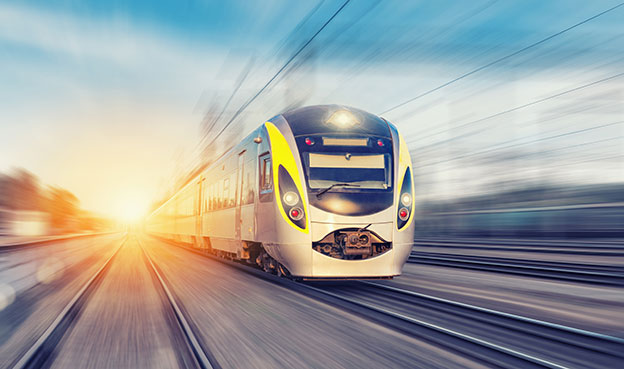
Railways are vital to modern cities. As transport arteries they allow greater numbers of people to live in concentrated areas, and help to reduce congestion and pollution generated by travelling on our roads.
However, railways also create their own issues, and can significantly impact on those that live around the tracks – which, with the increasing density of train lines, accounts for more and more people.
Beyond the irritation of the noise (which for most residents, based on the distance they will be from the track, will sit between the noise of a hair dryer and the sound on the ground of a busy road), is the far more substantial problem of vibrations created by trains. People feel them, and will typically learn to tune them out, but over the longer term these vibrations will cause structural problems to a building, and these can be expensive to repair.
And, while people will stop noticing that they feel those vibrations, the longer-term effect on the health and comfort levels of a person can be significant.
The final impact of this is that areas around trains tend to have lower land values and generate more complaints by residents. It can also limit the developments that can be executed. Communities will be concerned about tracks running close to hospitals, for example, and the effect the vibrations and noise might have on medical equipment and patients at rest can be a cause for concern.
So what can be done to address the challenge of railway vibrations?
Governments and the operating bodies of public transport networks are increasingly interested in mitigating not only the noise, but the vibrations that train networks produce. Governments have extended infrastructure noise policies to also account for vibrations, for example, creating mandates to protect residents against maximum noise level.
In order to determine the impact of a rail’s vibrations, a couple of different factors need to be properly modelled:
- The number of trains that will make use of the track, and their frequency
- The number of carriages on each train
- The speed of the train
- The distance between the tracks and property
- The geographic location of the tracks, and the lie of the land
- Other nearby buildings and their condition
In doing so, an accurate model can be developed that can determine whether the tracks will cause an unreasonable burden of noise and vibrations on the local community.
There are a number of different approaches that can be taken to reduce the impact of rail vibrations:
- Rubber insulators: Making use of rubber insulators under the track which dampen vibrations is the best strategy to put in place. These are easy to install either with new tracks or through track maintenance, and are long-lasting and economic.
- Track maintenance: Keep the tracks and trains well maintained – rickety tracks are more noisy and produce greater vibrations as trains pass over them than tracks and trains that are kept in a constant state of repair.
- Raise the tracks: Combined with adequate walling and insulation, a raised track will have a greatly reduced vibrations impact than were the tracks located on the ground.
- Underground tracks: A subway can still cause some vibrations, but the earth will absorb a significant amount of it for those above and around the track.
Another option is to supplement the main track lines with less intensive infrastructure. Trams and other light rail, for example, have the benefit that they can be laid down in the middle of a road, and these produce far less vibrations than standard rail lines.
Don’t forget construction
It’s also important that bodies consider the noise that construction and maintenance works have when working on tracks.
Drills and machinery also generate a great deal of noise and vibration disturbance – in some cases more than the trains themselves, and local residents have a right to be aware when they might be disturbed.
Communication is key here, both in establishing the hours in which works will be conducted, and those times where it might be necessary to be working in unusual hours, outside of the standard perimeters for construction work. Where possible work should not be continued past 10pm at night, and when it is, the exact dates and expected completion times should be communicated to all nearby residents.
Track noise and vibrations are more than just an irritation – when it’s consistent and sustained it can have a substantial impact on a person’s quality of life. As necessary as it is that we have a robust and extended train networks, it is also incumbent on both state governments and maintenance crews to be aware of any impositions they might be placing on a person’s peace and comfort.